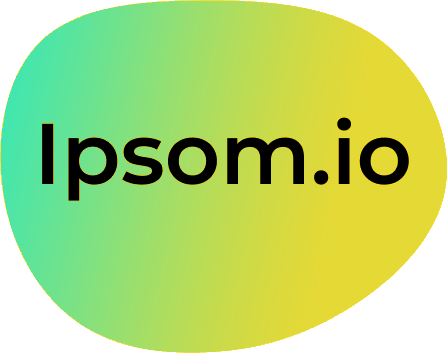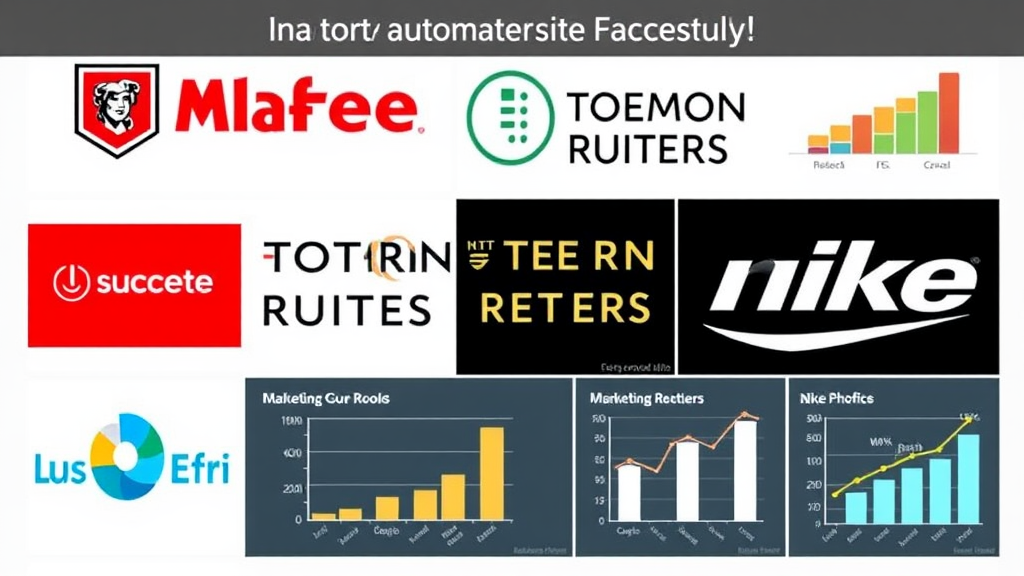Enterprise marketing automation (EMA) leverages technology to streamline and enhance marketing processes within large organizations. By automating tasks such as customer segmentation, campaign management, and data analysis, EMA enables businesses to deliver personalized experiences, improve efficiency, and drive revenue growth. This blog post explores the key components, benefits, and considerations for implementing enterprise marketing automation.
Key Findings
-
Enhanced Efficiency and Productivity: Automating repetitive tasks allows marketing teams to focus on strategic initiatives, leading to increased productivity.
-
Improved Customer Engagement: Personalized and timely content delivery enhances customer experiences and fosters loyalty.
-
Data-Driven Insights: EMA provides comprehensive analytics, enabling informed decision-making and optimized marketing strategies.
-
Scalability and Flexibility: EMA systems can adapt to growing business needs, supporting complex campaigns across multiple channels.
-
Cost Savings: By reducing manual labor and improving targeting, EMA can lead to significant cost reductions in marketing operations.
-
Alignment Between Marketing and Sales: EMA facilitates better collaboration between marketing and sales teams through shared data and streamlined processes.
What Are the Core Components of Enterprise Marketing Automation?
Enterprise Marketing Automation (EMA) systems are designed to streamline and enhance marketing processes at scale. Key components of EMA include:
Market Segmentation: EMA platforms categorize a broad customer base into specific segments based on demographics, behaviors, and preferences. This enables targeted and personalized marketing efforts, increasing engagement and conversion rates.
Lead Management: These systems automate lead capture, scoring, segmentation, and nurturing processes, facilitating efficient lead generation and conversion.
Multichannel Campaign Management: EMA tools coordinate and execute marketing campaigns across various channels, including email, social media, and websites, ensuring a cohesive branding and messaging approach.
Email Marketing Automation: They enable the scheduling and delivery of personalized email campaigns based on user interactions, enhancing customer engagement and retention.
Retargeting: EMA systems re-engage potential customers who showed interest but didn't convert by sending personalized content and ads, encouraging them to complete the sales funnel.
Analytics and Reporting: Built-in analytics features provide insights into campaign performance, customer behavior, and return on investment, guiding data-driven decision-making.
Data Privacy and Security: EMA platforms prioritize data protection by implementing security measures like access control and encrypted data storage, ensuring compliance with privacy regulations.
Workflow Automation: They streamline marketing processes by automating tasks and coordinating efforts among teams, reducing manual work and improving efficiency.
By integrating these components, EMA systems empower organizations to execute effective marketing strategies, enhance customer engagement, and achieve sustainable growth.
External Sources: Learn More
How Does Enterprise Marketing Automation Enhance Customer Engagement?
Enterprise marketing automation (EMA) significantly enhances customer engagement by leveraging advanced technologies to deliver personalized, timely, and relevant interactions. This approach not only streamlines marketing processes but also fosters deeper connections with customers.
Personalized Communication at Scale
EMA platforms collect and analyze customer data, enabling businesses to segment their audience based on behaviors, preferences, and demographics. This segmentation allows for the delivery of tailored content that resonates with individual customers, leading to higher engagement rates. For instance, personalized email campaigns can increase open rates by 26% and conversion rates by six times compared to generic messages.
Efficient Lead Nurturing and Scoring
By automating lead management, EMA systems track and nurture leads throughout their buyer's journey. They assign scores based on engagement and readiness to purchase, allowing businesses to focus resources on leads more likely to convert. This targeted approach improves conversion rates and ensures timely follow-ups.
Omnichannel Campaign Management
EMA tools enable the coordination of marketing campaigns across various channels, including email, social media, and company websites. This ensures a cohesive branding and messaging approach, providing a seamless customer experience regardless of the platform.
Real-Time Customer Interactions
With features like AI-powered chatbots, EMA platforms facilitate instant communication, handling repetitive tasks and ensuring 24/7 availability. This capability allows businesses to respond to customer actions in real time, such as sending a thank-you email after a purchase or a follow-up offer after a service interaction, enhancing the overall customer experience.
Data-Driven Insights for Continuous Improvement
EMA platforms offer robust analytics capabilities, providing detailed insights into campaign performance, customer behavior, and overall marketing ROI. These insights enable organizations to refine their strategies and achieve better results, ensuring that marketing efforts remain aligned with customer needs and preferences.
By integrating these capabilities, enterprise marketing automation not only streamlines marketing operations but also creates more meaningful and engaging interactions with customers, leading to increased loyalty and improved business outcomes.
External Sources: Learn More
Streamline your success and embrace automation—start your journey with ipsom.io or connect with us at office@ipsom.io.
The Role of Data Analytics in Enterprise Marketing Automation
In enterprise marketing automation, data analytics is pivotal for enhancing decision-making, optimizing campaigns, and delivering personalized customer experiences.
Key aspects include:
-
Customer Segmentation and Personalization: By analyzing customer data, businesses can segment their audience based on demographics, behavior, and preferences. This enables the creation of tailored marketing messages, increasing engagement and conversion rates.
-
Predictive Analytics: Utilizing historical data, predictive models forecast future customer behaviors and market trends. This foresight allows marketers to proactively adjust strategies, ensuring relevance and effectiveness.
-
Campaign Optimization: Data analytics facilitates the measurement of key performance indicators (KPIs) such as conversion rates and customer acquisition costs. This insight empowers marketers to refine campaigns, allocate resources efficiently, and maximize return on investment (ROI).
-
Real-Time Decision Making: Access to real-time data enables swift adjustments to marketing strategies, allowing businesses to respond promptly to market changes and customer needs.
Integrating data analytics into enterprise marketing automation not only streamlines operations but also fosters a deeper understanding of customer behavior, leading to more effective and personalized marketing efforts.
External Sources: Learn More
Key Considerations When Implementing Enterprise Marketing Automation
Implementing enterprise marketing automation (EMA) requires careful planning and consideration to ensure it aligns with your organization's goals and infrastructure. Key factors to address include:
Integration with Existing Systems
Seamless integration of the EMA platform with your current technology stack—such as CRM systems, content management systems (CMS), and analytics tools—is crucial. This ensures efficient data flow and a unified view of customer interactions, enhancing the effectiveness of your marketing efforts.
Scalability and Flexibility
Choose an EMA solution that can scale with your business growth and adapt to evolving marketing strategies. The platform should accommodate an increasing volume of data and support new marketing channels as needed.
Data Quality and Management
The success of marketing automation heavily relies on the quality of your data. Ensure that your data is accurate, up-to-date, and well-organized to enable effective segmentation and targeting. Regular audits and maintenance of your data repositories are essential to maintain data integrity.
User Training and Adoption
Comprehensive training programs are necessary to equip your team with the skills to utilize the EMA platform effectively. Encouraging user adoption across departments, including marketing, sales, and IT, fosters collaboration and maximizes the platform's potential.
Compliance and Security
Adhering to data protection regulations such as GDPR and CCPA is imperative. Implement robust security measures, including data encryption and access controls, to safeguard sensitive customer information and maintain trust.
Performance Monitoring and Optimization
Establish key performance indicators (KPIs) to monitor the effectiveness of your automated campaigns. Regular analysis and optimization of workflows, content, and strategies are essential to achieve desired outcomes and adapt to changing market dynamics.
By addressing these considerations, organizations can implement enterprise marketing automation systems that enhance operational efficiency, improve customer engagement, and drive business growth.
External Sources: Learn More
Transform your workflow today—visit ipsom.io or drop us a line at office@ipsom.io.
Top Enterprise Marketing Automation Tools to Consider
When evaluating enterprise marketing automation tools, it's essential to consider platforms that offer comprehensive features, scalability, and seamless integration capabilities. Below are some top enterprise marketing automation tools to consider:
Adobe Marketo Engage
Adobe Marketo Engage is a robust marketing automation platform tailored for medium to large businesses. It excels in lead management, account-based marketing (ABM), and executing cross-channel campaigns. Key features include:
- Lead Nurturing: Craft targeted, personalized campaigns to guide leads through the sales funnel.
- Account-Based Marketing: Implement targeted campaigns for specific high-value accounts.
- Advanced Analytics: Access in-depth reporting to assess campaign performance and return on investment.
- Email Campaign Optimization: Utilize A/B testing and behavioral targeting to enhance email campaigns.
- Cross-Channel Engagement: Engage customers across multiple channels, including email, social media, web, and ads.
- Sales and Marketing Alignment: Facilitate collaboration between sales and marketing teams for more effective campaigns.
Marketo Engage is particularly suitable for medium to large businesses, especially those in B2B sectors seeking a comprehensive marketing automation solution.
Salesforce Marketing Cloud
Salesforce Marketing Cloud is a versatile platform that integrates seamlessly with Salesforce CRM, offering tools for:
- Automated Lead Qualification: Employ lead scoring and grading to prioritize high-value prospects.
- Content Personalization: Customize content for emails and landing pages to boost engagement.
- Lead Nurturing: Implement automated drip campaigns to keep leads engaged throughout the sales funnel.
- Sales and Marketing Alignment: Provide real-time insights to sales teams through deep CRM integration.
- Email Optimization: Enhance email engagement using A/B testing and analytics.
- Multichannel Marketing: Reach customers via email, mobile, in-app, and more.
This platform is ideal for large businesses with the resources to invest in advanced marketing automation, particularly those aiming to manage leads, align sales and marketing teams, and engage customers across multiple channels.
HubSpot Marketing Hub
HubSpot Marketing Hub is an all-in-one marketing automation platform designed to unify customer insights. It offers tools for email marketing, social media management, campaign automation, and advanced analytics. Key features include:
- Email Automation: Automate email marketing campaigns with segmentation and templates.
- Marketing Hub Integration: Seamlessly connect with other HubSpot tools.
- Analytics Tools: Gain detailed insights into marketing campaigns and automation workflows.
- CRM Integration: Integrate with HubSpot’s CRM for improved lead management.
HubSpot offers various pricing tiers, including a free plan, making it accessible for businesses of different sizes.
Pardot by Salesforce
Pardot is a B2B marketing automation solution by Salesforce that empowers businesses to create, deploy, and manage online marketing campaigns efficiently. Key features include:
- Lead Scoring and Grading: Prioritize leads based on engagement and fit.
- Email Marketing: Design and execute targeted email campaigns.
- ROI Reporting: Measure the return on investment of marketing efforts.
- CRM Integration: Seamlessly integrate with Salesforce CRM for unified data management.
- Automated Workflows: Streamline marketing processes with automation.
Pardot is particularly beneficial for B2B companies seeking robust lead management features and deep integration with Salesforce CRM.
IBM Watson Campaign Automation
Leveraging IBM Watson’s AI capabilities, Watson Campaign Automation enables marketers to analyze customer data, predict behaviors, and optimize campaigns for maximum impact. Key features include:
- Robust Segmentation and Targeting: Utilize behavioral data for precise audience segmentation.
- Intuitive Campaign Management: Design and automate campaigns across multiple channels.
- Advanced Analytics: Measure campaign performance and return on investment effectively.
This platform integrates seamlessly with enterprise systems, ensuring data consistency and security.
When selecting an enterprise marketing automation tool, consider factors such as your business size, specific marketing needs, integration requirements, and budget to choose the platform that best aligns with your objectives.
External Sources: Learn More
Case Studies: Successful Enterprise Marketing Automation Implementations
Implementing marketing automation has enabled numerous enterprises to enhance their marketing strategies, improve lead management, and drive significant revenue growth. Below are several case studies highlighting successful implementations of enterprise marketing automation:
McAfee: Enhancing Lead Quality and Conversion Rates
McAfee, a global leader in computer security, faced challenges with the quality of leads generated by their marketing efforts. To address this, they implemented Oracle Marketing Cloud (Eloqua) to align their marketing and sales teams. By introducing lead scoring and personalized follow-up campaigns, McAfee improved lead quality and achieved a fourfold increase in conversion rates. Additionally, the number of leads decreased by 35%, but the overall quality improved, leading to more efficient sales processes.
Thomson Reuters: Accelerating Lead Conversion and Revenue Growth
Thomson Reuters, a global information services company, struggled with ineffective targeting in their marketing campaigns. By adopting Eloqua as their marketing automation platform, they implemented lead scoring and personalized messaging based on each lead's position in the sales funnel. This approach resulted in a 72% reduction in lead-to-conversion time and a 175% increase in revenue generated from marketing efforts. Furthermore, the number of high-quality leads transferred from marketing to sales increased by 23%.
HubSpot: Streamlining Lead Qualification and Sales Processes
HubSpot, a renowned inbound marketing platform, utilized its own software to automate lead qualification and integrate various applications. This led to a 90% reduction in lead qualifying processes and a 96% acceleration in lead delivery. By automating workflows and segmenting leads, HubSpot enhanced efficiency and ensured consistency across their marketing efforts.
Adobe: Personalizing Customer Engagement and Improving ROI
Adobe integrated Adobe Experience Cloud to automate marketing campaigns across multiple channels, ensuring a consistent message and customer experience. By analyzing customer data, Adobe personalized content and offers, leading to a 20% increase in conversion rates. The automation tools also allowed Adobe to allocate resources more effectively, resulting in a 30% increase in marketing ROI.
Nike: Enhancing Customer Loyalty through Personalized Marketing
Nike employed marketing automation to send personalized emails based on user behavior, leading to a 25% increase in open rates. By segmenting their audience, Nike created targeted ads that resonated with specific customer groups, resulting in a 15% increase in sales. Automated follow-ups and rewards programs also helped Nike boost customer retention rates significantly.
These case studies demonstrate the transformative impact of marketing automation on enterprise-level organizations, highlighting improvements in lead management, customer engagement, and overall marketing efficiency.
External Sources: Learn More
FAQ – Frequently Asked Questions
What is enterprise marketing automation?
Enterprise marketing automation (EMA) refers to the use of technology to streamline and automate marketing activities within large organizations. It aims to improve marketing effectiveness by reducing manual tasks, enabling cross-team collaboration, and delivering personalized, data-driven campaigns at scale.
Key components of EMA include:
-
Data Management: Collecting and unifying customer data from various sources to create comprehensive customer profiles.
-
Audience Segmentation: Dividing customers into specific groups based on demographics, behavior, and preferences to enable targeted marketing efforts.
-
Content Management: Creating, optimizing, and distributing personalized content across multiple channels, such as email, social media, and websites.
-
Workflow Automation: Automating repetitive tasks and marketing processes to improve efficiency and consistency.
-
Analytics and Reporting: Providing insights into campaign performance and customer behavior to inform data-driven decision-making.
Benefits of implementing EMA:
-
Improved Efficiency: Automating routine tasks allows marketing teams to focus on strategic initiatives and creative work.
-
Enhanced Customer Experience: Delivering personalized and timely content increases customer engagement and satisfaction.
-
Data-Driven Insights: Access to comprehensive analytics enables businesses to optimize marketing strategies and improve ROI.
-
Scalability: EMA systems can adapt to growing business needs, managing complex campaigns and large customer bases effectively.
By leveraging EMA, enterprises can achieve more efficient, personalized, and data-driven marketing operations, leading to better customer relationships and business growth.
How does EMA differ from traditional marketing automation?
Enterprise Marketing Automation (EMA) differs from traditional marketing automation in several key aspects:
-
Scale and Complexity: EMA is designed for large-scale organizations, handling extensive data and complex, multi-channel campaigns, whereas traditional marketing automation suits smaller businesses with simpler needs.
-
Integration Capabilities: EMA platforms seamlessly integrate with various enterprise systems like CRM, ERP, and data management platforms, providing a unified marketing environment. Traditional marketing automation may have limited integration options.
-
Advanced Features: EMA offers sophisticated features such as AI-driven analytics, advanced segmentation, and personalized customer experiences, which may not be available in traditional marketing automation tools.
-
Data Management and Security: EMA emphasizes robust data management and security features to meet regulatory requirements and protect sensitive information, a focus that may be less pronounced in traditional marketing automation.
-
Scalability: EMA systems are built to scale with the growth of large enterprises, efficiently managing increasing demands without sacrificing performance, unlike traditional marketing automation systems.
In summary, EMA provides a more comprehensive, integrated, and scalable solution tailored to the complex needs of large enterprises, distinguishing it from traditional marketing automation.
What are the challenges in implementing enterprise marketing automation?
Implementing enterprise marketing automation presents several challenges:
-
Data Quality and Integration: Inaccurate or siloed data can lead to ineffective campaigns. Ensuring seamless integration between marketing automation tools and existing systems is crucial.
-
Over-Automation and Lack of Personalization: Excessive automation may result in impersonal interactions. Balancing automation with personalized content is essential to maintain customer engagement.
-
Insufficient Training and User Adoption: Without proper training, teams may underutilize automation tools. Providing comprehensive training and securing team buy-in are vital for successful implementation.
-
Budget Constraints: High costs associated with licensing, setup, and training can be prohibitive. Starting with cost-effective platforms and demonstrating ROI can help justify expenses.
-
Compliance and Security Concerns: Adhering to data protection regulations is mandatory. Implementing strict data policies and choosing compliant tools are necessary to mitigate risks.
-
Lack of Clear Strategy: Without a defined strategy, automation efforts may lack direction. Establishing clear objectives and understanding the target audience are foundational steps.
-
Integration with Existing Systems: Integrating automation tools with current systems can be complex. Selecting tools with pre-built integrations or open APIs can facilitate this process.
-
Measuring ROI and Effectiveness: Determining the impact of automation can be challenging. Defining key performance indicators and employing analytics tools are essential for assessment.
-
Resistance to Change: Employees may resist new technologies. Conducting regular training and involving stakeholders in the selection process can ease the transition.
-
Content Maintenance: Over time, automated content may become outdated. Regularly reviewing and updating content ensures continued relevance and effectiveness.
Addressing these challenges requires strategic planning, ongoing training, and continuous optimization to fully realize the benefits of marketing automation.
Can small businesses benefit from enterprise marketing automation?
Yes, small businesses can benefit from marketing automation by streamlining repetitive tasks, enhancing customer engagement, and improving lead management. These tools enable personalized marketing efforts, efficient resource allocation, and data-driven decision-making, leading to increased efficiency and growth.
How do I choose the right EMA platform for my organization?
Choosing the right Enterprise Mobility Management (EMM) platform involves evaluating several key factors:
-
Business Requirements: Assess your organization's specific needs, including device types, operating systems, security requirements, and whether you prefer a cloud-based or on-premises solution.
-
Security Features: Ensure the EMM solution offers robust security measures such as data encryption, remote wipe capabilities, and compliance with industry regulations like GDPR and HIPAA.
-
Integration Capabilities: The platform should seamlessly integrate with your existing IT infrastructure, including directory services, identity providers, and enterprise applications, to maintain operational efficiency.
-
User Experience: Opt for an intuitive interface that simplifies device management for IT administrators and ensures a positive experience for end-users, thereby promoting adoption and productivity.
-
Scalability: Choose a solution that can grow with your organization, accommodating an increasing number of devices and users without compromising performance.
-
Vendor Support and Reputation: Select a vendor with a proven track record and reliable customer support, offering comprehensive services such as training, documentation, and technical assistance.
-
Cost Considerations: Evaluate the total cost of ownership, including licensing fees, implementation costs, and ongoing maintenance expenses, to ensure the solution fits within your budget.
By carefully considering these factors, you can select an EMM platform that aligns with your organization's needs and objectives.






